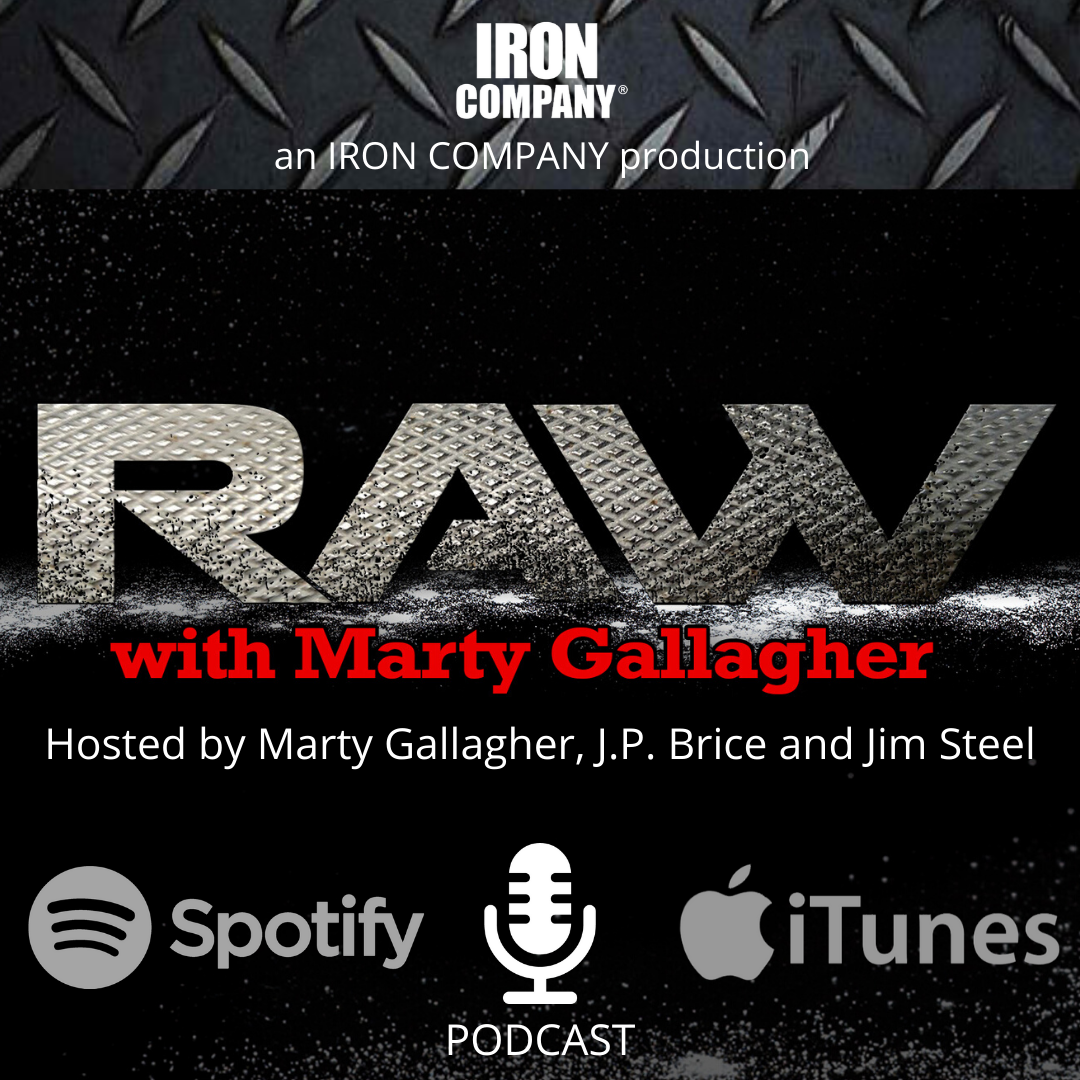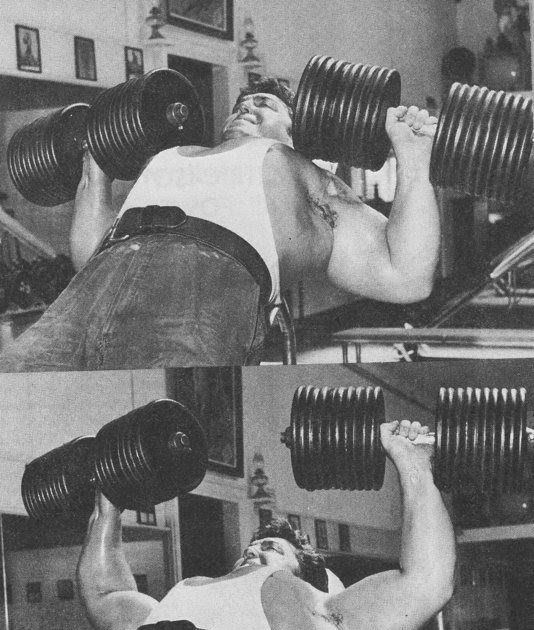
The Mighty Pat Casey - Powerlifting Super Star
Pat Casey in his prime (above): the 24-year old pushes a pair of 200-pound dumbbells for three sets of 5-reps. The first man to bench press 600-pounds in 1965, his strategies were traumatic and effective.
I recently came across a series of old articles on the great Pat Casey, the first man to bench press 600-pounds. I thought they were extremely inciteful, the sort of barebones hardcore training articles I inhaled back in the 60s. Pat Casey was the first powerlifting superstar. The sport was officially launched in 1964 and Pat captured the imagination of alpha males worldwide by pushing the world record in the bench press upward from 523 to 622 in a two-year record-breaking spree.
Pat Casey was an all-time great insofar as upper body strength. To this day, his flat benching, incline dumbbell pressing, overhead barbell pressing, tricep pressing and dipping feats are unmatchable on an across-the-board basis – while modern strongmen might exceed his feats on an individual basis (even in our modern era, strongmen, standing 6’5 and weighing in excess of 400-pound + pounds) I defy you to find a single strongman that can raw bench 620, seated press 400, dip with 300 for reps and incline press a pair of 220-pound dumbbells for 5 reps.
Pat Casey was no one trick pony. He squatted 800-pounds, using horrible technique. He basically would bend forward at the waist. The squat was high by modern standards. Still, his 800-squat was done raw and was legal for those primitive times. He added to the squat a 730-pound deadlift. Not bad for a lift he never practiced. Pat’s 2,100-pound three-lift national and world record total stood for five years before Jim Williams, John Kuc and Jon Cole blew past 2100 and eventually thru the 2,300-pound barrier. What struck me as I reread his training routine was the brutal simplicity.
At the time, Pat Casey was training at Bill Pearl’s old gym on Manchester street in Los Angeles. Bill had the super heavy-duty strength equipment and the massive dumbbells Pat required. He would come in on Monday and start off by performing a now extinct exercise: rack work, doing partial rep bench presses. Pat liked partial movements.
He would set the power rack pins four inches from lockout. He would work up to his heaviest poundage and perform three single reps with a static weight. Pat would then drop the pins down four more inches and again pushed three limit singles. He would follow with two light (for him) sets of regular bench presses, usually 405 for two sets of three reps.
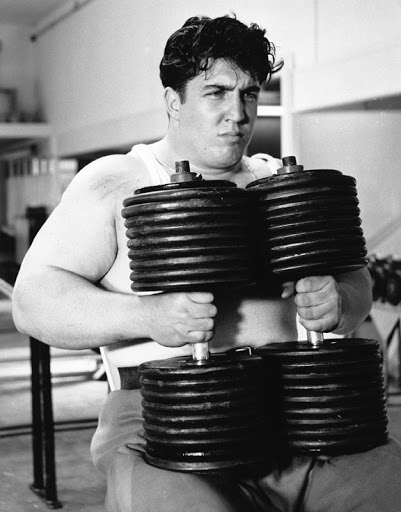
Warmed up, Pat Casey now tied into the heaviest work of the day: heavy dumbbell incline presses. He was unrivaled as an incline dumbbell presser and would work up to three sets of five with a pair of 200s. His best-ever set of incline dumbbell presses was a pair of 220s (440 total) for six reps. Most remarkably, Pat weighed a relatively light 290-pounds at the time. He eventually topped out at 320-pounds bodyweight.
Not yet finished, Pat Casey would then perform 2-3 sets of light bodyweight dips for 8-10 reps, quite a feat for a man a few biscuits shy of 300-pounds bodyweight. He would finish Monday’s workout with some arm work, usually 5-6 sets of his unique pullover/triceps extension exercise super-setted with some light curls. He would take his time and it might take two hours or more for him to plow through Monday’s session.
On Tuesday Pat would squat. At the time this workout was taken, Pat weighed 285 and his best squat was 720. In this particular session, Pat worked thru 135 for 5 reps, 225 x 3, 315 x 2, 405 x 2, 585 x 2 before his top sets: 650 for 5 single reps. This was followed with a pump set of squats: 515 for 10 reps. Pat would super-set leg extensions using high reps: 3 x 20 reps were super-setted with lying leg curls 3 x 12-reps. Pat would finish Tuesday’s session with “sticking point” deadlifts. These are deadlifts done in the power rack starting just below the knees: 315 x 5, 405 x 2, 515 x 1 then 565-pounds for six single reps.
Wednesday and Thursday were off days. Friday was bench press day. At the time of the workout, he had just broken the 600-pound barrier. He would warm-up with a set of 20-reps with 135. Then 225 x 10, 315 x 5, 405 x 5, 515 x 1. Done with the warm-ups, Pat would rip into the meat of the meal: five strict single reps with 570. He had no set rest times between the singles and might take up to five minutes before tying into the final singles. Pat would then reduce the poundage and flush the pecs, shoulders with 405 x 10 and 315 x 20.
Done with benching, Pat Casey would then commence doing seated front presses using a barbell. Pat’s seated front presses were so strict and so upright that he had to turn his head to the side so the bar could clear his face. I cannot imagine. The rest of the world inclines the back brace ever so slightly so that they can push overhead without colliding with the chin. Pat wanted to perform the strictest possible overhead press. A strict, back-braced 90-degree push is the absolute hardest overhead press.
Pat Casey would turn his head sideways to maintain the push angle. I have never seen this done by any other lifter. Pat would seated press 135 x 10, 225 x 5, 315 x 3 and finally 400 x 1. Keep in mind this is after bench pressing 570 for five singles, 405 x 10 and 315 x 20. Talk about pre-fatigue! Not finished, Pat continued front pressing with 315 x 5 and 225 x 8. Onto dips: Pat would do three sets of five reps with bodyweight as a warm-up. Then the real work TEN sets of 5-reps with a 200-pound dumbbell hung around his waist. Again, his triceps were already toast from benching and overhead pressing. That was it for Friday’s session.
Saturday’s workout would start with rack work. Pat would set the pins at his squatting sticking point, about six inches above parallel. He would squat down to the pins, pause, do a dead-stop before pushing upward to lockout. No bouncing off the pins. 135 x 10, 225 x 5, 315 x 3, 405 x 2, 515 x 1, 585 x 1, 650 x 1. Now the real work: 750 x 1 for five single reps. He would finish with a high rep set of regular depth pause squats with 405. Legs were completed with 2-3 sets of leg curls and leg extensions.
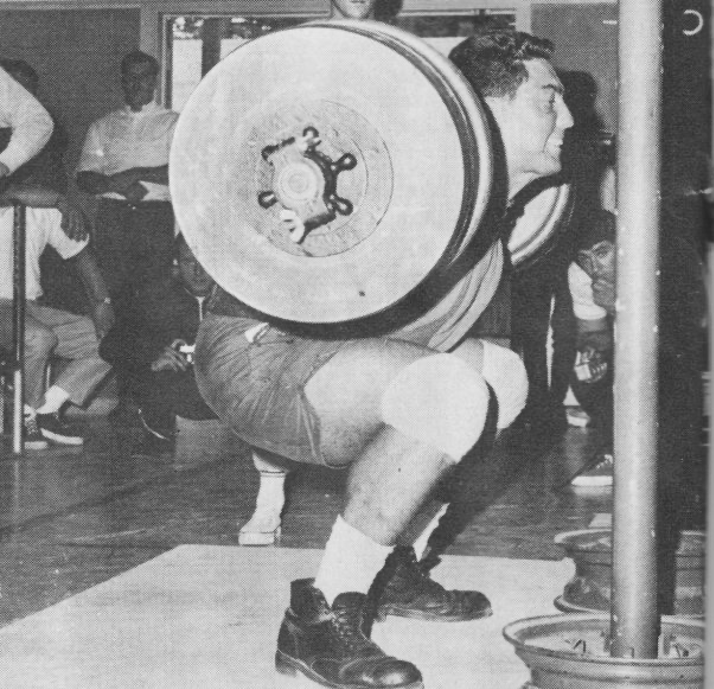
Pat Casey normally finished Saturday’s workout with some light (for him) arm work and neck work. Back in those days, neck work was included in the training regimen. Bill Pearl was Pat’s mentor and gym owner and Pearl was a huge proponent of neck work. For some reason, Pat Casey had an affinity for weighted dips. Pat was a huge fan of powerhouse Marvin Eder. Marvin loved weighted dips, and this influenced Pat. His dip feats have never been duplicated. Some of his dip feats border on science fiction stuff. Here is an excerpt from an ancient article where the Great Bruce Wilhelm interviews the Great Pat Casey. Casey related…
Marvin (Eder) was the reason I did dips. The dip works every part of the upper body with special emphasis on the triceps and front deltoids. As I’m sure you are aware, triceps make up 2/3’s of the arm’s overall size. that explosion off the bottom in the bench press or the overhead press - and the continuous follow-through, especially the lockout at the end of the bench/overhead press, comes from triceps strength.
Another important tricep exercise for me was the lying triceps extension. I would hook my feet around the bench then lay back on the bench. I would reach back to the barbell on the floor and do a pullover. This was followed by a triceps extension. Every rep was a pullover followed by a triceps extension. I would do 5-6 sets of 3-5 reps. My best was 365 x 3 in this pullover and extension movement. This exercise really strengthened my entire upper body.
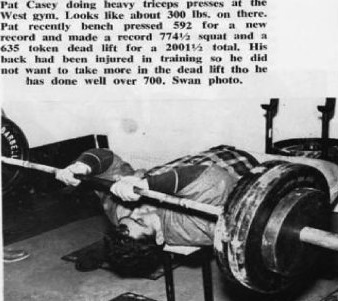
Now here is where it gets crazy….
The last workout I did on dips was one of my marathon workouts. At a bodyweight of 300-pounds, I tied a 250-pound dumbbell to my waist and over a seven-hour period I performed 200 dips with the 250-pound dumbbell. I might do 1-5 reps per set. I kept going till I had accumulated 200-reps with the 250. The last 100-reps we basically single rep sets. Afterwards I was totally thrashed, exhausted past exhausted; I was shot for the next two weeks. It took me seven hours.
For some reason at that time I felt that this type of training would be productive – and it was – but at a cost. On several other occasions I did workouts where my goal was to lift 100,000 cumulative pounds spread over an eight-hour period. My motivation was to see if this extreme amount of work could bust me through to the next level – which it did. I would also go on these marathon binges with the press behind neck. In looking back now, it was total insanity.

“It caused numerous injuries. I stopped this type of training in 1965. I can probably trace many of my shoulder injuries to these all-day marathon workouts. Looking at the situation today, if I were training heavy nowadays, I would cut the sets back to probably 5 or 6 sets. I would still do dips, but I would avoid the marathon sessions.
Pat Casey sought to continually push his bodyweight upward. Every day he drank six quarts of whole milk mixed with protein powder. He stayed anabolic all day long by stuffing his body full of quality calories and obtaining quality rest, deep, restorative sleep in ample amounts. This magical combination enabled Pat, a tall man at 6’1”, to push his bodyweight upward, continually upward, from 260, where he first bench pressed 500-pounds, to 320, where he benched 622 and squatted 800 raw.
Pat Casey was a visionary. He was a believer in a lost Iron Art: power rack work, breaking a lift down into segments and strengthening specific parts of the range-of-motion. Pat felt heavy rack work helped him psychologically. Casey was going where no human had gone before. Pat was a long way in front of the rest of humanity insofar as his upper body strength. He had a justifiable fear his body might blow apart. Rack work helped him physiologically and psychologically. Bruce Wilhelm asked Pat about his rack work strategy, why and how? What was the purpose?
Once I posted 500 in the bench press, I needed something to jolt my body. I thought about doing the lockouts from two positions: 4” off the chest and 7” off the chest. The thought being that I would strengthen my tendons and ligaments. Then I could do more volume work in the other exercises without breaking down or getting injured.
Rack work helped me psychologically. I was lifting tremendous weights in these short, partial movements. That gave me confidence and made regular bench pressing seem “lighter.” I wanted my partial rep training to create motor-pathway carryover. To reinforce motor-pathway transference, I always finished my bench press rack work, my heavy partials, with a set of regular full ROM bench presses. Do they ever feel light in your hands! When doing this bench press rack training, I would warm up very thoroughly. I liked doing five singles in two positions. I felt that singles were best for building strength, but they also force fast twitch muscles to fire. My theories worked well for me.
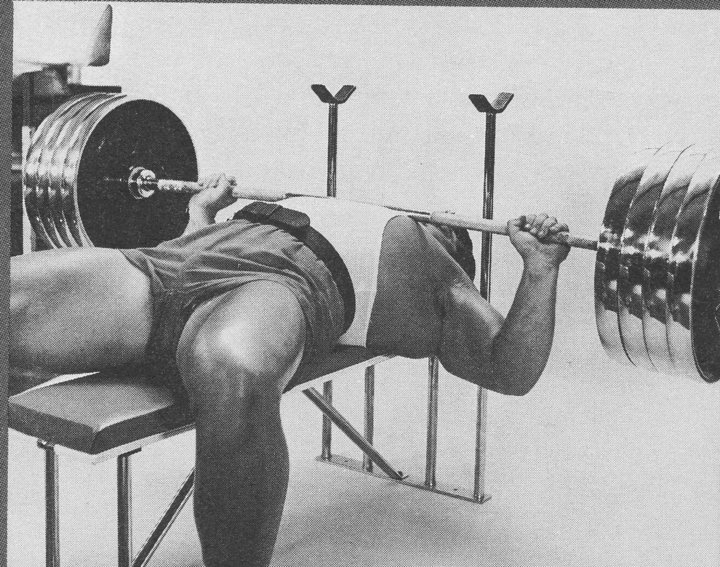
About the Author
As an athlete Marty Gallagher is a national and world champion in Olympic lifting and powerlifting. He was a world champion team coach in 1991 and coached Black's Gym to five national team titles. He's also coached some of the strongest men on the planet including Kirk Karwoski when he completed his world record 1,003 lb. squat. Today he teaches the US Secret Service and Tier 1 Spec Ops on how to maximize their strength in minimal time. As a writer since 1978 he’s written for Powerlifting USA, Milo, Flex Magazine, Muscle & Fitness, Prime Fitness, Washington Post, Dragon Door and now IRON COMPANY. He’s also the author of multiple books including Purposeful Primitive, Strong Medicine, Ed Coan’s book “Coan, The Man, the Myth, the Method" and numerous others. Read the Marty Gallagher biography here.


